Neck wrinkles: How to prevent and treat them according to a dermatologist
Board-certified dermatologist, Dr. Mohta talks about how to prevent and treat neck lines.
Table of Content:
Why do I have lines on my neck? | At what age do they appear? | What causes neck lines? | Morning skin care routine for neck lines | Evening skin care routine for neck lines | Healthy lifestyle | Anti-aging procedures
Our commitment to producing high-quality content:
The information presented in this article is based on scientific research and the professional advice of our Content Medical Reviewers, who are experts in the field of Dermatology. How we write our content →
Neck wrinkles typically refer to the visible lines (or wrinkles) that can appear on the skin of the neck as a natural part of the aging process.
Neck lines can manifest as horizontal lines or “necklace lines” that run horizontally across the neck or as vertical lines that extend downward. These lines can vary in severity, from fine lines that are barely noticeable to deeper wrinkles.
We asked Dr. Alpana Mohta, board-certified dermatologist about the best way to prevent and get rid of neck creases and she mentioned that there are three things you can do: Have a skin care routine for anti-aging with prescription grade creams, having a healthy lifestyle and considering cosmetic procedures ideal for your skin at your local dermatology clinic.
Why do I have lines on my neck?
According to Dr. Mohta, the natural aging process leads to a loss of collagen and elastin in the skin, making it prone to wrinkles in the neck and other places such as the face, and chest. Sun exposure, genetics, and lifestyle habits can accelerate this process. Sleeping positions, poor posture and weight fluctuations can cause skin to fold or sag, while gravity contributes to skin sagging.
At what age do neck wrinkles start?
Dr. Mohta says that neck wrinkles can start to appear as early as the late 20s to early 30s but tend to become more noticeable in the mid-30s to early 40s. These wrinkles become more prominent as individuals enter their mid-40s. However, the timing of neck wrinkles varies from person to person based on genetics and lifestyle factors. Preventive measures, including sun protection, lifestyle modifications and a proper skincare routine, can help delay the onset of neck wrinkles and reduce their visibility as individuals age.
What causes neck lines?
Sun exposure
According to Dr. Mohta, prolonged and unprotected sun exposure causes photoaging, which refers to the premature aging of the skin caused by chronic and excessive exposure to ultraviolet (UV) radiation from the sun or tanning beds1. Unlike chronological aging, which occurs naturally as we grow older, photoaging is primarily the result of external factors, particularly sun exposure.
Smoking
Smoking is known to have detrimental effects on the skin and is linked to several diseases. Studies show that smoking accelerates the aging of the skin since tobacco decreases the production of collagen and promotes the degradation of collagen and elastic fibers2.
Not drinking enough water
Water is essential for the body, helping to maintain balance, support tissue function, and regulate temperature. It plays various roles like being a nutrient, solvent, and transportation carrier. When the body lacks water, it can lead to tissue dehydration and functional issues, including skin problems like aging and inflammation. The condition of your lax skin, especially on the lips, neck and limbs, reflects the body’s hydration levels3. Dr. Mohta recommends drinking more than 2 liters of water per day for good skin health.
Poor nutrition
A high-fat and high-sugar diet can have detrimental effects on health, contributing to conditions such as obesity, type 2 diabetes, non-alcoholic fatty liver disease, and premature skin aging. Moreover, this dietary pattern can accelerate skin aging, resulting in wrinkles, loss of elasticity, and uneven skin tone due to the formation of advanced glycation end products (AGEs) that damage skin collagen and elastin fibers4.
Lack of a skin care routine
According to Dr. Mohta, not having an anti-aging skincare routine can be detrimental because it leaves the skin vulnerable to premature aging, including the development of wrinkles, sagging, and sunspots. Neglecting skincare can also lead to dryness, dullness, and an uneven complexion, impacting overall skin health and self-confidence. Additionally, without proper sun protection, the skin is at risk of UV damage, skin cancers and other chronic skin conditions, potentially requiring more extensive and costly treatments later. An anti-aging routine not only addresses existing signs of aging but also helps prevent their onset, making it a proactive and beneficial choice for maintaining youthful and healthy-looking skin.
Aging
Dr. Mohta explained that as we age, our skin gradually loses its thickness, elasticity and recoil due to a decrease in the production of collagen and elastin, which are important factors that contribute to the formation of wrinkles. Collagen is a protein that provides structural support to the skin, helping it remain firm, elastic, and smooth5. When collagen production declines with age this leads to the formation of wrinkles, including neck lines.
Genetics
Genetics play a role in how the skin ages6, and some individuals may be genetically predisposed to developing neck lines or wrinkles earlier or more prominently than others.
Poor posture
Repetitive movements and positions, such as constantly looking down at devices like smartphones or laptops, result in what’s known as “tech neck wrinkles.” This posture-related strain can accelerate the formation of horizontal lines and wrinkles on the neck.
How to get a prescription for neck lines?
If you have neck lines, you can have a photo consultation and request a prescription for glycolic or salicylic acid and tretinoin to combat these wrinkles. A photo consultation is $59 and you will get your prescription in 1-2 working days.
Neck wrinkle treatment: How to get rid of neck lines?
1. Incorporate a skin care regime for anti-aging
Working together with an online dermatologist to get a customized anti-aging formula for you and having an effective skincare routine for anti-aging will help you minimize visible signs of aging, promote skin health, and maintain a youthful complexion.
Always conduct a patch test and consider consulting a dermatologist for personalized guidance.
Morning skin care routine for neck wrinkles
Mild cleanser
Start with a mild cleanser to remove night sweat and impurities without stripping the skin of its natural oils.
Vitamin C
Applying vitamin C in the morning is beneficial to prevent neck wrinkles due to its powerful antioxidant properties. Vitamin C helps protect the skin from free radical damage caused by environmental factors like UV radiation and pollution, which are key contributors to premature aging. When applied in the morning, it acts as a shield, neutralizing free radicals and reducing oxidative stress on the skin7.
Use a moisturizer with niacinamide
Dr. Mohta says that applying niacinamide after vitamin C in your skincare routine is generally safe and can offer a synergistic effect for your skin. Both ingredients provide antioxidant protection, stimulate collagen production, and promote a more even skin tone. Vitamin C shields the skin from free radicals and brightens the complexion, while niacinamide strengthens the skin’s barrier, enhances hydration, and reduces redness.
Apply sunscreen
Use a broad-spectrum sunscreen with SPF 50 daily to shield the skin from UV damage, which is a primary cause of premature aging8.
Consult a Board-Certified Dermatologist Now!
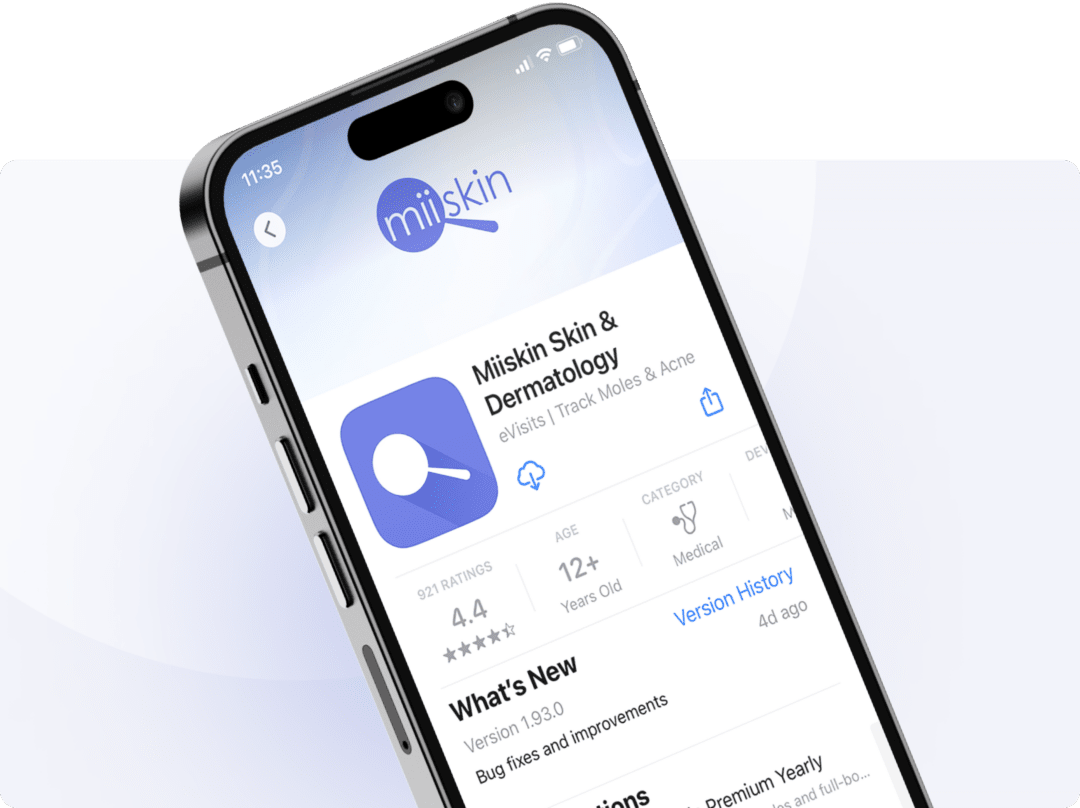
Download the Miiskin app to connect with independent, board-certified dermatologists who are licensed in your state. Answer a few questions, upload some photos and get a treatment plan in 1-2 days. Consultation price is $59 and medication renewals are only $39.
Online dermatology care is ideal for chronic dermatology conditions.
Evening skin care routine for neck lines
Mild cleanser
Start with a mild cleanser to remove dirt, makeup, and impurities without stripping the skin of its natural oils.
Use glycolic or salicylic acid 1 or 2 days per week
Using salicylic or glycolic acid at night 1-2 days per week on your neck for anti-aging is effective because these exfoliating acids work to renew and rejuvenate the skin while you sleep. By applying these acids at night, you maximize their benefits without exposing your skin to potential sensitivity from sunlight, helping to achieve a smoother, youthful complexion. Be sure to follow up with a good moisturizer to help replenish the skin’s barrier after using exfoliating acids.
Incorporate a prescription retinoid 5 days per week
Incorporating a prescription-strength retinoid on your neck on the days you do not apply glycolic or salicylic acid at night for anti-aging is highly effective. Retinoids, such as tretinoin or Altreno, are powerful agents that stimulate collagen production, reduce fine lines and wrinkles, and improve skin texture. They work by increasing cell turnover and promoting the shedding of old, damaged skin cells to reveal fresher, younger-looking skin9. Applying retinoids at night allows them to work without interference from sunlight, as they can make the skin more sensitive to UV radiation.
Use a moisturizer with niacinamide or hyaluronic acid
Using a moisturizer with hyaluronic acid or niacinamide after tretinoin at night in your anti-aging skincare routine is highly beneficial. Tretinoin, while effective for skin renewal and reducing signs of aging, can sometimes lead to dryness and irritation. A moisturizer with hyaluronic acid helps maintain skin hydration, while niacinamide strengthens the skin’s barrier, soothes irritation, and supports collagen production. These ingredients work together to enhance the anti-aging effects of tretinoin while minimizing potential side effects, resulting in smoother, more youthful-looking skin.
2. Maintain a healthy lifestyle
Dr. Mohta says that a healthy and balanced diet can significantly contribute to maintaining skin health and reduce neck creases. Here are some essential nutrients and dietary components that should be included for optimal skin health:
- Drinking at least 2 liters of water per day is essential to keep the skin hydrated from the inside out
- Foods rich in antioxidants (such as berries, citrus fruits), vegetables (such as carrots, spinach, sweet potatoes), and green tea, help protect the skin from oxidative damage caused by free radicals
- Sources like fatty fish (such as salmon, mackerel), flaxseeds, and walnuts provide omega-3 fatty acids that can help reduce inflammation and maintain skin’s moisture.
- Vitamin C (found in citrus fruits, strawberries, and bell peppers) helps in collagen production.
- Vitamin E (found in nuts, seeds, and vegetable oils) acts as an antioxidant.
- Vitamin A (found in sweet potatoes, carrots, and spinach) supports skin cell growth and repair.
- Adequate protein intake from sources like lean meats, poultry, fish, beans, and legumes is vital for collagen production and tissue repair.
- Include sources of healthy fats like avocados, olive oil, and nuts to maintain skin’s natural oil barrier and prevent dryness.
- Foods like nuts, seeds, whole grains, and lean meats are rich in zinc, which supports skin health and wound healing.
- Selenium-rich foods such as Brazil nuts, whole grains, and seafood can help protect the skin from damage caused by the sun’s UV rays.
- High-fiber foods like whole grains, fruits, and vegetables help maintain a healthy gut, which can impact skin health by reducing inflammation.
- Yogurt, kefir, sauerkraut, and other probiotic-rich foods can help balance gut bacteria, potentially benefiting skin conditions like acne and eczema.
- Limit sugar and processed foods as they can contribute to skin issues and inflammation.
- Aim for 7-8 hours of quality sleep as it is essential for skin repair and regeneration.
- Avoid smoking and excessive alcohol as these habits accelerate skin aging.
- Avoid direct sun exposure and tanning beds
- Take a collagen supplement to improve skin hydration and elasticity10 11 12 13
Request tretinoin for neck wrinkles!
3. Opt-in for anti-aging procedures for neck wrinkles
Dr. Mohta says that if you need additional help getting rid of your neck lines, you should find a dermatologist in your city to have a cosmetic procedure at a dermatology clinic. There are a few alternative methods to tighten neck skin without resorting to surgery.
Derma rolling
Derma-rolling entails using a handheld tool known as a derma roller with a handle and a cylindrical roller head with miniature needles. Derma-rolling is commonly used to enhance overall skin texture, although it may also serve as an option for addressing specific skin issues such as minor wrinkles, acne scars, and stretch marks.
Fractional laser treatment
Fractional laser treatment is effective for addressing neck wrinkles by creating precise, controlled micro-injuries in the skin. These micro-injuries stimulate the production of collagen and elastin, proteins crucial for skin firmness and elasticity. As the skin heals, it regenerates with fresher, stronger tissue, leading to improved texture, reduced wrinkles, and a more youthful appearance. Unlike traditional laser resurfacing, fractional laser treatment treats only a portion of the skin, allowing for faster healing and less downtime. Multiple sessions may be needed to achieve the best results, ensuring ongoing improvement in skin quality and wrinkle reduction14.
High-intensity focused ultrasound (HIFU)
High-intensity focused ultrasound is effective for reducing neck wrinkles by delivering precise ultrasound energy deep into the skin. This energy generates controlled heat, triggering collagen production and remodeling. As collagen increases, the skin becomes smoother and tighter, resulting in a gradual reduction in neck wrinkles and sagging.
HIFU offers both immediate and long-term benefits, with visible improvements developing over time. It is a non-invasive and safe alternative to surgery, making it a popular choice for individuals seeking skin rejuvenation without extensive downtime or risks associated with surgical procedures15.
Radiofrequency (RF) treatment (Thermage)
Radiofrequency treatment (also known as Thermage) is effective for reducing neck wrinkles by delivering controlled heat into the skin’s deeper layers. This heat causes immediate collagen contraction, resulting in initial tightening of the skin. Furthermore, it stimulates the production of new collagen over time, improving skin elasticity and reducing the appearance of wrinkles. RF treatment offers both immediate and long-term benefits, often requiring a series of sessions for optimal results. It is a non-invasive and safe option with minimal downtime, making it a convenient choice for individuals seeking to rejuvenate their neck skin and combat wrinkles16.
Need Expert Dermatologist Care?

Get expert advice from a licensed online dermatologist by simply uploading photos from your phone. If needed, a prescription (branded or generic depending on preference) will be sent directly to your favorite pharmacy. Nationwide coverage.
Microneedling radiofrequency ablation
Microneedling Radiofrequency (MNRF) for neck wrinkles combines microneedling and radiofrequency energy to treat skin laxity and wrinkles. The procedure uses tiny needles to create controlled micro-injuries in the skin, stimulating collagen and elastin production. Simultaneously, radiofrequency energy heats the deeper layers of the skin, further encouraging collagen remodeling. This combined effect helps to tighten the skin, improve texture, and reduce the appearance of neck wrinkles, resulting in a more rejuvenated and smoother neck area17.
Injectables
Botox for the neck, nicknamed ‘Nefertiti neck lift’ after the Egyptian queen known for her sculpted jawline, targets tense muscle bands, notably those appearing during teeth clenching. This procedure yields impressive transformations by relaxing these muscles18.
Meanwhile, fillers, suited for addressing “necklace lines” or horizontal wrinkles, involve placing a fine filler thread beneath these lines to minimize their prominence. Additionally, fillers can contour the chin, enhancing skin firmness to deter potential sagging.
Determining the suitable treatment hinges on wrinkle depth and desired outcomes. Deeper lines often favor fillers, whereas superficial wrinkles or slight tightening preferences may align better with Botox.
Injectable moisture treatments
Injectable moisture treatments such as Profhilo, Restylane SkinBoosters, Teosyal Redensity 1, and Juvederm Volite, provide hydration, stimulate collagen production, and enhance skin quality, which collectively contribute to the reduction of neck wrinkles.
These treatments hydrate the skin from within which is essential for maintaining elasticity and suppleness, reducing the prominence of wrinkles and fine lines. Besides, these injectables stimulate production of collagen and elastin so the skin becomes stronger, smoother, and more resilient. This added strength can help reduce the sagging and crepey texture often associated with neck wrinkles.
The results of these treatments tend to develop gradually, making them a suitable option for those seeking a natural-looking enhancement. Over time, as collagen production continues, the skin’s texture and quality improve, resulting in a more youthful and rejuvenated appearance.
Lee este artículo en Español Arrugas en el cuello ¿Cómo prevenirlas y tratarlas?
Key points of the article
- Definition and appearance: Neck wrinkles, a natural part of the aging process, manifest as horizontal “necklace lines” or vertical lines, varying from fine, barely noticeable lines to deeper creases.
- Causes: Factors contributing to neck wrinkles include loss of collagen and elastin due to aging, sun exposure, genetics, lifestyle habits, sleeping positions, poor posture, weight fluctuations, and gravity.
- Prevention and treatment: Dr. Alpana Mohta recommends a combination of anti-aging skincare routines with prescription-grade creams, a healthy lifestyle, and cosmetic procedures for the best results in preventing and reducing neck wrinkles.
- Skincare routine: A recommended morning routine includes a mild cleanser, Vitamin C serum, niacinamide moisturizer, and SPF 50 sunscreen. The evening routine includes a mild cleanser, glycolic or salicylic acid (1-2 times weekly), a prescription retinoid (5 days weekly), and a moisturizer with niacinamide or hyaluronic acid.
- Cosmetic procedures: Effective treatments for neck wrinkles include fractional laser treatment, High-Intensity Focused Ultrasound (HIFU), radiofrequency (Thermage), microneedling radiofrequency ablation, Botox, dermal fillers, and injectable moisture treatments, all aimed at stimulating collagen production, tightening the skin, and reducing wrinkles.
Want to get a prescription-strength anti-wrinkle cream for your neck?
References:
https://www.ncbi.nlm.nih.gov/pmc/articles/PMC8802961/
https://www.sciencedirect.com/science/article/abs/pii/S092318110700321
https://www.ncbi.nlm.nih.gov/pmc/articles/PMC7146365/
https://www.ncbi.nlm.nih.gov/pmc/articles/PMC1606623/
https://www.ncbi.nlm.nih.gov/pmc/articles/PMC3583889/
https://www.ncbi.nlm.nih.gov/pmc/articles/PMC5605218/
https://www.ncbi.nlm.nih.gov/pmc/articles/PMC2699641/
https://www.ncbi.nlm.nih.gov/pmc/articles/PMC6835901/
https://www.ncbi.nlm.nih.gov/pmc/articles/PMC7146365
https://www.ncbi.nlm.nih.gov/pmc/articles/PMC3583891/
https://www.sciencedirect.com/science/article/abs/pii/S0738081X21000717
https://www.ncbi.nlm.nih.gov/pmc/articles/PMC2921736/
https://www.ncbi.nlm.nih.gov/pmc/articles/PMC7073974/
https://www.ncbi.nlm.nih.gov/pmc/articles/PMC4631236/
https://www.researchgate.net/publication/349288677_Radiofrequency_Microneedling_A_Comprehensive_and_Critical_Review
https://www.ncbi.nlm.nih.gov/pmc/articles/PMC6489637/


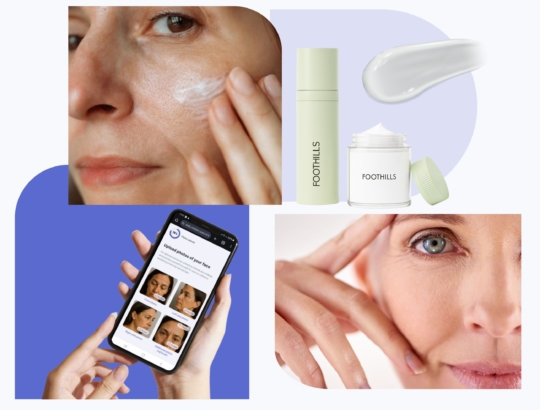

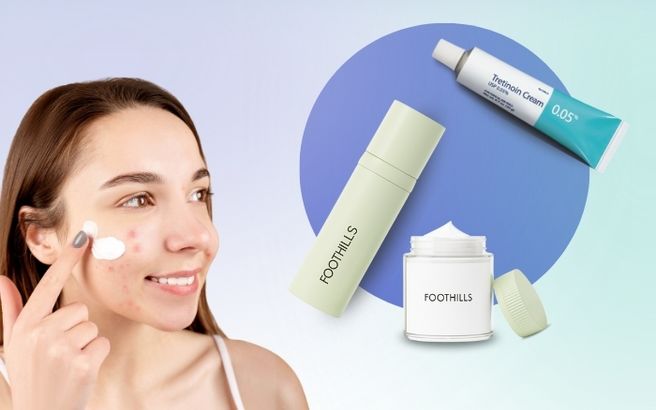
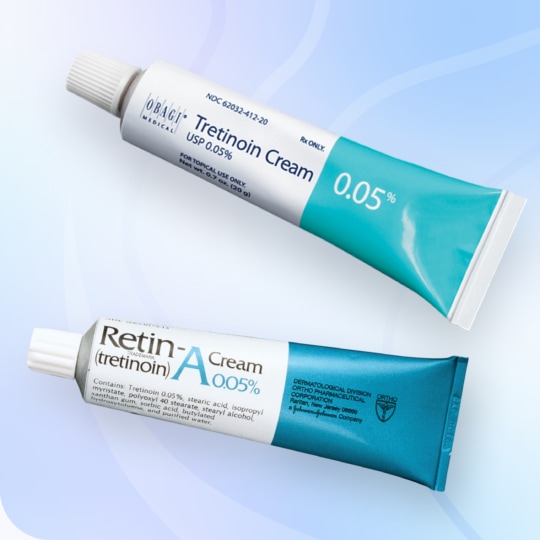
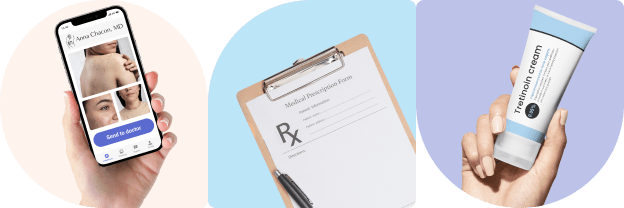

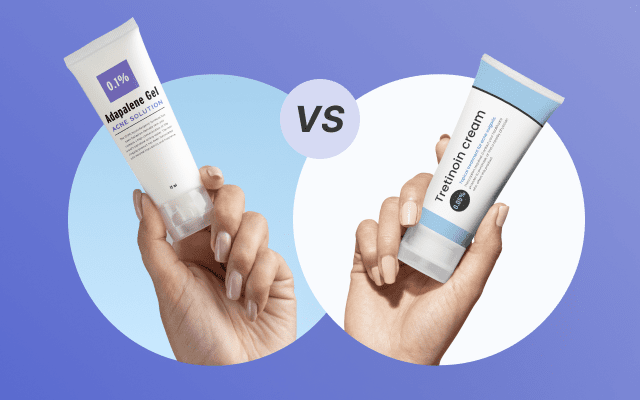

 Get a prescription for neck lines!
Get a prescription for neck lines!